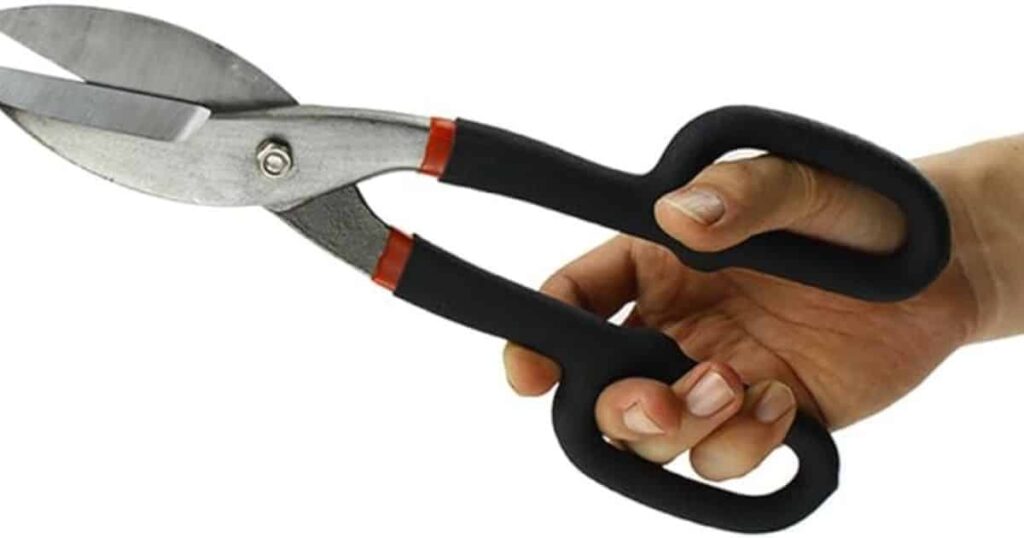Is it true that you are dealing with a DIY undertaking that calls for equipment material? Whether you’re involving it for walls, kitchen cupboards, or enclosures, it means a lot to know how to function with this exceptionally durable material. Cutting hardware cloth accurately and safely might be a challenge.
You need to know how to use the right equipment and procedures to create cuts that are straight and uniform. Don’t fret!
There are a variety of tools and techniques available for use, including as shears, saws, and welding machines. Come and take out your toolbox and let’s get started!
Discover Hardware Cloth Types

Equipment material is a fundamental part for any jack of all trades or Do-It-Yourself lover. It’s utilized to forestall little animals like rodents, birds, and bugs from entering your property and causing harm. Also, knowing the various sorts of equipment fabric can assist you with distinguishing which one will suit your necessities the best.
Generally, hardware cloth comes in different gauges, meshes, and materials such as galvanized steel, copper, bronze, and stainless steel. Each of these types has specific purposes and applications, from creating pet enclosures and garden barriers to repairing wire fences. Understanding which hardware cloth to choose will ensure that it delivers the best protection for your project. But have you ever wondered what fiberglass looks like on clothes? Fiberglass insulation is notorious for leaving tiny glass fibers on clothing, which can cause irritation and discomfort.
Choose the Right Tools for Cutting Hardware Cloth

With regards to cutting equipment fabric, having the right devices can have a significant effect. While it very well might be enticing to simply get anything that clips you have lying around, utilizing the appropriate wire cutters or clips planned explicitly for this reason can make the interaction much smoother and simpler.
It’s essential to consider the sort and thickness of the material you’ll be cutting prior to choosing an instrument. In any case, remembering the climate is likewise significant. For instance, in the event that you’re working inside or in a space with restricted ventilation, a power saw probably won’t be the most ideal decision.. And speaking of environments, have you ever wondered if hand sanitizer stains clothes? Let’s have a look.
Pro Tips: Wearing protective gloves is a must while handling hardware cloth since the extremely sharp edges may cause serious wounds and scratches.
Customize Your Cuts With Aviation Snips
Aviation snips are an excellent choice if you need a tool that can be used for a variety of purposes and is precise enough to cut hardware cloth. Metal can be easily cut with these shears because of their unique design, which allows for both straight and curved cuts.
They are thus ideal for tasks that ask for some degree of individualization, such as the construction of wire mesh cages or the cutting of hardware cloth for unusually shaped openings. Aviation snips, with their sharp blades and ergonomic shape, provide a stress-free cutting experience because of their easy grasp and fluid motion.
Keep the following things in mind while cutting hardware clothes.
Mark the area
Marking out the area that needs to be cut is an important first step before beginning any DIY project that requires cutting materials. Use a marker or tape measure to locate the exact location you want to cut, whether you’re dealing with hardware clothes, wood, fabric, or anything else.
This will guarantee that the finished product is neat and tidy, and it may also help avoid mistakes that could result in to wasted resources or an inferior product.
Secure the Hardware Cloth
Make sure your hardware cloth is well fastened before beginning to cut. Otherwise, the wire mesh might move and cause cuts to be uneven or possibly cause harm.
Keep the cloth from moving by putting clamps or weights under it and setting it down on a stable surface. Another option is to have someone hold it steady while you make your cuts.
Fixing the hardware cloth will pay off in the long run, so don’t rush.
Cut in a Straight Line
Though it may be scary at first, straight cuts made with shears or tin snips may be made with ease and precision by those who put in the time and effort to perfect their skill.
Hold the Tool Firmly
Once you have the tool securely in hand and at a perpendicular angle to the material, you may begin cutting with a steady, uniform pressure.
Cutting or snipping too quickly can cause mistakes or ragged edges, so take your time and use a controlled motion.
You’ll get the hang of making straight cuts with some time and effort.
Clean Your Tasks
Dealing with hardware cloth’s rough edges that may catch and scrape your hands is one of the most annoying parts of working with the material.
Luckily, there’s an easy fix:
Filing them down with a metal file or sandpaper. If you take the time to smooth down the sharp spots, your completed product will not only appear better, but also be easier to handle. In a matter of minutes, your hardware cloth may be perfectly smooth and ready for use.
Use Pliers or Wire Snips to Snip Through Hardware Cloth
It may seem like a huge challenge to cut through hardware fabric, but if you have the correct equipment, you can do it quickly and effortlessly. Two excellent tools for the task at hand are pliers and wire snips.
Pliers offer a secure grasp and can quickly snip through the fabric’s delicate wires. Wire snips, on the other hand, can be used to make a clean, accurate cut through metal wires. It’s a question of taste, but either method is effective at slicing through hardware cloth.
Wear protective gear like gloves and goggles regardless of the tool you use. If you have a steady hand and some time, you can cut through hardware cloth like a pro.
Utilize a Bolt Cutter for Sturdy Hardware Cloth
Unfortunately, pliers aren’t always enough when dealing with hardware cloth. Here’s where the mighty bolt cutter proves its worth.
There are times while working with equipment material requires a device that can truly whittle down those thick wires because of its strong form. You would rather not put your pincers in danger of being harmed by attempting to involve them as a bolt shaper, and you likewise don’t have any desire to endanger yourself of getting injured.
On the off chance that you’re dealing with a DIY undertaking and go over any equipment fabric, you can definitely relax; a bolt shaper’s strong, sharp jaws will take care of it. Don’t be afraid to reach for the bolt cutter the next time you’re confronted with some extremely tough hardware cloth.
Cut Hardware cloth using an Angle Grinder
You need an angle grinder if you’re having trouble cutting hardware cloth. An angle grinder is a powerful instrument for cutting through tough materials like hardware cloth. With the proper cutting disc and its strong motor, even the roughest cuts will be fast and easy.
Whether you need to cut hardware cloth for a do-it-yourself project or a commercial task, an angle grinder will get the job done quickly and effectively.
Its mobility and small size also facilitate its usage and movement in confined areas. Hardware fabric may now be cut with ease thanks to this instrument.
What things should considered while using an Angle Grinder for cutting hardware clothes?
There are a few things to keep in mind while using an Angle Grinder to cut hardware cloth:
- Your Own Security
Wearing protective gear, such as gloves and goggles, may help keep you safe from sparks and other flying objects.
- Tightly Fasten Your Hardware Cloth
Before beginning any cutting, make sure the hardware cloth is securely fastened in place using clamps or a vice.
- Fully Expert
Before using an angle grinder on hardware cloth, it’s a good idea to become informed with the instrument and its features.
- Select a Suitable Cutting Disc
Angle grinders come with a variety of cutting disc options; pick one designed for use with strong materials like hardware cloth.
- Use a Steady Hand
Cutting hardware cloth requires a steady hand and controlled action with an angle grinder because of the material’s inherent difficulty.
- Work In Open Area
Because of the dust and debris that may be generated by using an angle grinder, it is important to operate in a well-ventilated location.
- Take rests
Cutting through hardware fabric may be physically difficult, so it’s important to take breaks at regular intervals to prevent weariness and ensure precision.




